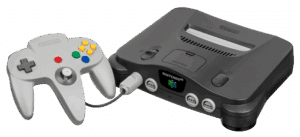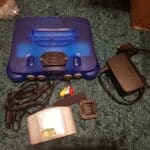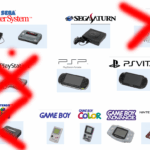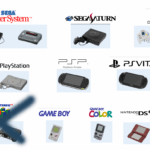
The
Nintendo 64 was a fifth-generation home video game console released by Nintendo in 1996, and was the last major home console to use cartridges for its game media. It was notable for its shift from 2D to 3D gaming, its powerful hardware, and a unique controller design that featured an analog stick, which set new standards for 3D game control.
Hardware and specifications
- CPU: The console was powered by a 64-bit NEC VR4300 CPU running at 93.75 MHz.
- Graphics: It utilized a 64-bit “Reality Coprocessor” (RCP) co-developed with Silicon Graphics, which was responsible for advanced 3D graphics features like anti-aliasing and trilinear filtering to smooth textures.
- Memory: The system included 4 MB of Rambus RDRAM, expandable to 8 MB with the optional “Expansion Pak,” which was required for some more demanding games like Donkey Kong 64 and The Legend of Zelda: Majora’s Mask.
- Media: Nintendo controversially stuck with ROM cartridges for games, citing advantages like faster load times and durability, while deliberately avoiding the high-piracy issues associated with CD-ROMs.
- Controller: The unique “M” or three-pronged controller featured a D-pad, a large central analog stick for 360-degree movement, A/B buttons, C-buttons, and a Z-trigger.
Controller accessories
- Controller Pak: An accessory that plugged into the bottom of the controller for saving game data.
- Rumble Pak: A separate pack that provided force feedback, which became a standard feature in later controllers.
- Transfer Pak: Allowed for data transfer between supported N64 and Game Boy games, famously used with Pokémon Stadium to import creatures from the handheld games.
The cartridge controversy
Nintendo’s decision to continue with cartridges put the console at a disadvantage against its chief rival, the CD-based Sony PlayStation.
- Disadvantages: Cartridges had a smaller storage capacity and were more expensive to manufacture, pushing many key third-party developers, like Squaresoft (now Square Enix), to defect to Sony’s platform.
- Advantages: The format’s speed meant virtually no loading times, and it was also more effective at preventing software piracy.
Noteworthy game library
Despite a smaller third-party library, the
N64 is remembered for its legendary first-party and second-party titles that pushed the boundaries of 3D gaming.
- Super Mario 64 (1996): Revolutionized 3D platforming and set the standard for 3D camera and movement control.
- The Legend of Zelda: Ocarina of Time (1998): Widely considered one of the greatest games ever made, it set the template for modern 3D action-adventure games.
- GoldenEye 007 (1997): A landmark title that demonstrated the viability and appeal of first-person shooters on home consoles.
- Mario Kart 64 (1996): Popularized four-player multiplayer with its four built-in controller ports, a major selling point for the console.


